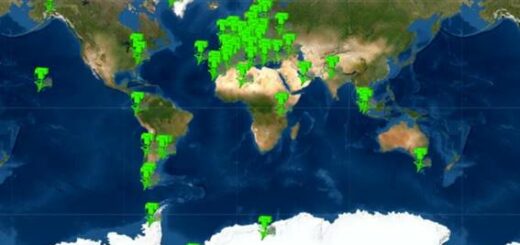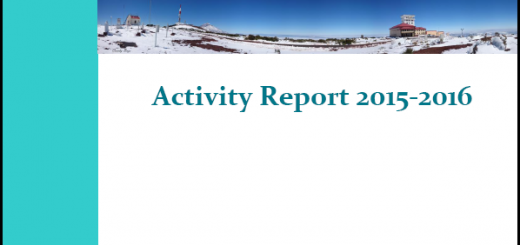Animations from images obtained from the Izaña Atmospheric Observatory webcams
Izaña Atmospheric Observatory, as part of their publishing and informative work, makes a series of cameras available to the public with which they can see weather conditions around most of the island of Tenerife. In addition, animations be generated using the images sent form the cameras to a server at regular intervals, which is of great use in the study of certain phenomena, such as the temporal evolution of the classic ‘sea of clouds’, the Stratocumulus layer associated to the trade winds.
{flv width=”320″ height=”240″}timelap230311{/flv}
This video is made up of 1,440 still images taken by a webcam focused on the valley of La Orotava at regular one-minute intervals, starting at 00.00 and ending at 23.59 on March 23 2011. The video is 3 minutes long, so the images have been speeded up by 480 times real time: every second of video time corresponds to 8 minutes real time.
The first 48 seconds of the video correspond to the early hours of the morning, before dawn and the street lighting in the built-up areas in the valley of La Orotava can be seen, which means there is no Stratocumulus between Izaña and the built-up areas. Shortly before dawn those lights can no longer be seen and as day begins, we can see that the clouds have reached the level of the observatory.
It is very interesting to observe, as the days goes on, how the Stratocumulus layer evolves: there are periods when it is seen to ascend the mountainside and others when it moves back out towards the sea. Although, in general, the ‘sea of clouds’ tends to reach its highest levels during daytime, in the video it seems to move in ‘waves’, alternating between periods of drawing back with others of expansion, just like the waves of a real sea.
Finally, we can see how the ‘sea of clouds’ descends at dusk until it disappears after the sunset as the dry air descends as it cools on the mountainside and, once again, the lights in the valley are visible.
{flv width=”640″ height=”480″}timelap070411{/flv}
This video consists of 240 still images taken by a webcam facing the Güimar valley at regular five-minute intervals, starting at 04.00 and ending at 23.55 on April 7 2001. The video is 30 seconds long, so the images have been speeded up 2,400 times real time: every second of video time is 40 minutes real time.
In the video the street lights in the city of Santa Cruz and the built-up areas of the Güimar valley can be made out during the night and the relative movements of some stars too, in addition to the evolution of cloud formations and, in particular, the unique sight of how the shadow of Teide is projected to the east at sunset – pay special attention at second 15 on the video.
In addition to the videos, some of the still images from the cameras are of unquestionable beauty. Here are some examples:
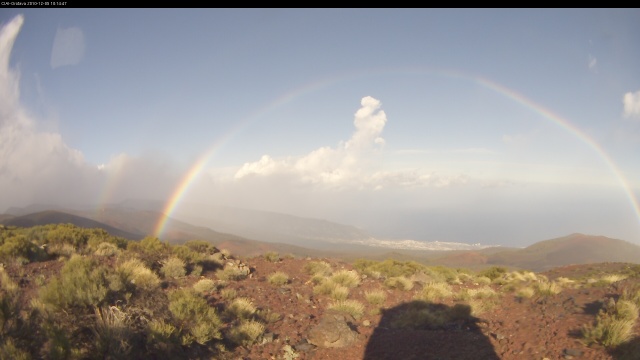
In this photograph, taken on December 5 2010, an almost complete main rainbow is seen and a little of the secondary rainbow. It was a day of certain atmospheric instability, as can be deduced from the rainbow itself and a small Cumulus congestus developing in the NW (towards the island of La Palma).
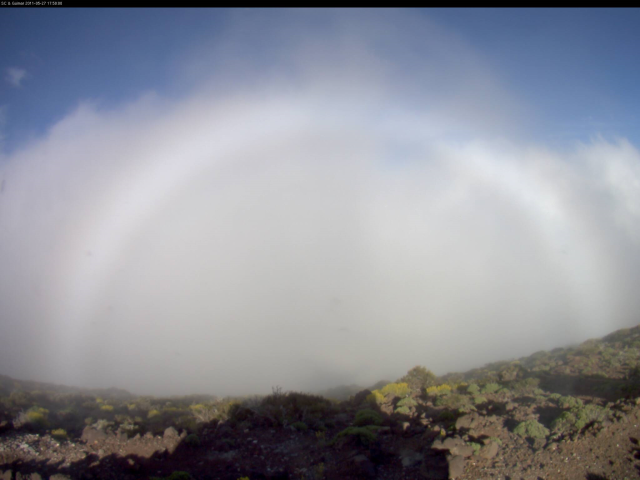
In this still image taken by the camera facing the Güimar valley last May 27, another not well known phenomenon, but quite often seen from mountain stations, can be observed – a fog rainbow, or fogbow, which forms when the observer has his/her back to the sun and below him/her in the opposite direction the fog phenomenon forms. In this particular case, the clouds are the result of the ‘sea of clouds’, which was just about to reach the level of Izaña Observatory when the photograph was taken, making it possible to see the fogbow.
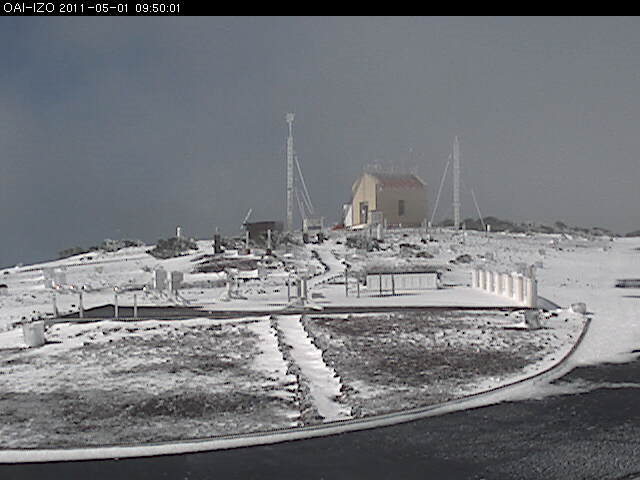
Of course, the cameras let us see weather conditions around the observatory. Here we can see the ground covered with a fine layer of snow after the late snowfall in the early hours of the morning last May 1.

